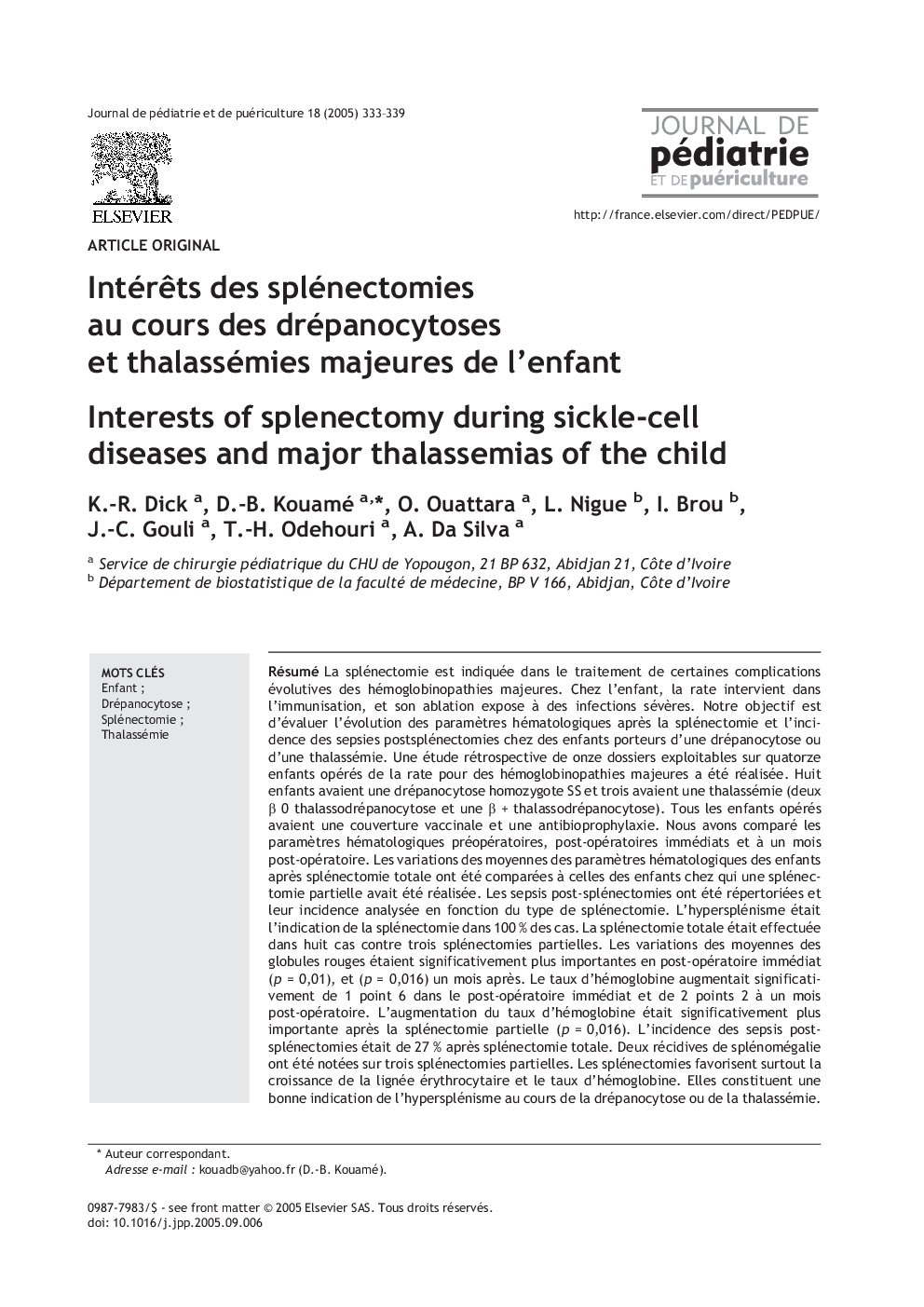| Article ID | Journal | Published Year | Pages | File Type |
|---|---|---|---|---|
| 9376033 | Journal de Pédiatrie et de Puériculture | 2005 | 7 Pages |
Abstract
Splenectomy is recommended in the treatment of some evolutive complications of major haemoglobinopathies. For children, the spleen plays an important part in immunization and its ablation may involve severe infections. Our objective is to assess the evolution of haematological parameters after splenectomy and the incidence of post-splenectomy sepsis in children carriers of sickle-cell anaemia and thalassaemia. A retrospective study of 11 available files has been carried out on 14 children who had spleen removed for major haemoglobinopathies. Eight children had a homozygote sickle-cell anaemia SS and 3 had a thalassaemia (2β0 thalasso-sickle cell anaemia and 1β + thalasso sickle-cell anaemia). All children undergoing surgical operation had a vaccine coverage and antibioprophylaxis. We compared the pre-operative haematological parameters, the immediate post-operative parameters, and one month after operation. Average variations of haematological parameters of the children after complete splenectomy have been compared with those of the children who undervent a partial splenectomy. The post-splenectomies sepsis had been recorded and its incidence analyzed according to the type of splenectomy. Hypersplenism was the indication of splenectomy in 100% of the cases. The complete splenectomy was performed in 8 cases against 3 cases of partial splenectomies. Average variations of red blood cell count were significantly more important in the immediate post-operative period (P = 0.01) and at one month after operation (P = 0.016). The haemoglobin rate increased significantly by 1 point 6 in the immediate post-operative period and by 2 point 2 one month after operation. The increase of haemoglobin rate was more important particularly after partial splenectomy (P = 0.016). The incidence of post-splenectomy sepsis reached 27% after complete splenectomy; pneumococcus meningitis, tuberculous pleuropericarditis, septicaemia due to salmonella were involved. Two splenomegaly recurrences have been notified out of three partial splenectomies. Splenectomies encourage particularly the increase of erythrocyte lineage and haemoglobin rate, they are good indication of hypersplenism during sickle-cell anemia and thalassaemia. The complete splenectomy exposes to more infectious risks whereas the partial splenectomy exposes to a hypersplenism recurrence by increasing the volume of the spleen remaining part.
Related Topics
Health Sciences
Medicine and Dentistry
Perinatology, Pediatrics and Child Health
Authors
K.-R. Dick, D.-B. Kouamé, O. Ouattara, L. Nigue, I. Brou, J.-C. Gouli, T.-H. Odehouri, A. Da Silva,
